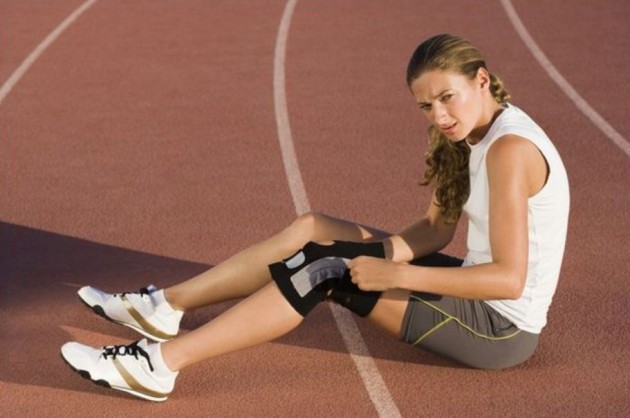
Meniscal injuries
What are the meniscus?
Commonly know as the knee cartilages there are two meniscus in each knee. They are semi lunar shaped bits of fibrocartilage. The medial meniscus is c shaped and sits on the top of the tibia (shin bone) on the inside of the knee. The lateral menisus sits on the tibia on the outside of the knee. Both meniscus:
– increase the stability of the knee
– help to lubricate the knee joint
– act as shock absorbers
Both meniscus are attached to the tibia via ligaments, however the ligaments to the medial menisus are tighter and stronger that those to the lateral meaning the medial one has less movement, and therefore is trapped and injured more often that the lateral one. The medial meniscus is injured 5 times more frequently than the lateral one.
How are the meniscus injured?
In young to middle age adults the meniscus are usually damaged by a simgle traumatic incident. Typically the foot is fixed (for instance you are wearing spiked or studded shoes for athletics, cricket, football, golf and so on) the foot stays still with the body weight on it, often the knee is slightly bent. If the body then twists the cartilage is trapped inbetween the tibia and femur and the rotational force tears it. In an incident such as this the medial collateral (a large ligament that runs across the inside of the knee and joins onto the cartialage) and anterior cruiciate ligaments can also be injured
As we get older the menisus get stiffer and less resiliant so in older adults less traumatic force is needed to injure the cartilage. Frequently the person cannot remember one specific incident and rather it is a combination of small incidents over time that cause one or more degenerative tears in the meniscus.
What are the symptoms of a damaged meniscus?
– Pain – usually localised over the joint line on either the inside or outside of the knee depending on which meniscus is damaged. Sometimes there may be pain in the back of the knee
– Giving way – the joint can feel unstable and may give way, often this is when wlaking and suddenly turning or changing direction.
– Locking– the knee can get stuck so that it cannot fully straighten. This happens when the tear in the cartilage has a flap from it which gets stuck beetwen the tibia and femur and jams the joint. Locking can last seconds, minutes or days. If the locking comes and goes the unlocking may be accompanied by a loud clunk.
– Swelling – with a traumatic injury that damages the meniscus and swelling will form within a few hours. Swelling within minutes is more indicative of damage to the anterior cruciate ligament.
Will a torn meniscus heal?
In a child the meniscus has a blood supply to it and is relatively supple meaning a menisus injury in a child is less common that in an adult.
In an adult the blood supply to the menisus deminishes. Typically there is a blood supply to the outer third of the meniscus, this is known as the red zone. There is no blood supply to the inner two thirds of the meniscus which is consequently known as the white zone.
A small traumatic tear or degenerative tear in the red zone has the possibility of healing.
What’s the treatment?
Some years ago the treatment for a torn meniscus would be a menisectomy- an operation to remove the whole of the meniscus. It was quickly realised that removing the meniscus would lead the joint to develop arthritis. In fact removal of 16 – 34% of the medial meniscus increases the joint surfact contact froces by 50%
Nowadays the meniscus is assessed by a keyhole surgical proceedure called an arthroscopy. If the damage is in the red zone a repair may be attempted by suturing the edges of the tear together. If any of the meniscus has to be excised (taken away) then as little as possible is removed.
In a tear that is less than 1.5 cm long, or that doesn’t go through the whole depth of the meniscus it is better not to operate. Treatment then should consist of modalities such as ice, medication and specific exercises.
With a degenerative meniscus treatment will depend on the symptoms. If the knee is frequently locking or giving way then an arthroscopic examination may be the best way forwards. Otherwise may dengenerative meniscal problems can be managed with conservative treatments including specific exercises.
Read more articles from our Physiotherapy section.
Check out our Interviews section, every Tuesday a new interview! Tomorrow read about Yulia Merkulova – I had positive experience with Marichev in Krasondar.